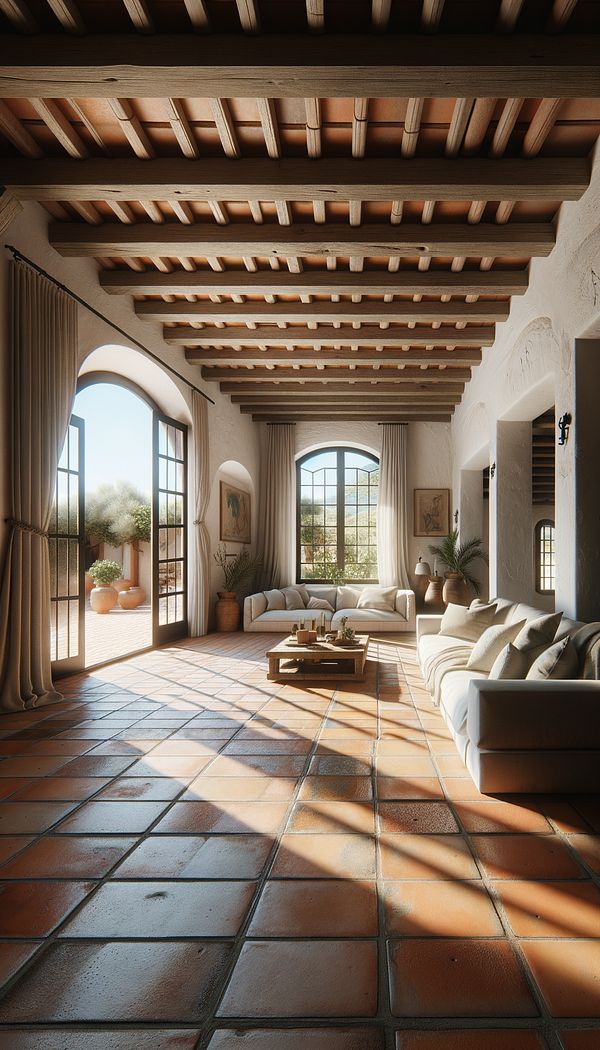What is Mediterranean?
Mediterranean refers to a design style inspired by the regions bordering the Mediterranean Sea.
Description
Mediterranean design encompasses a look that is warm, casual, and inviting, drawing inspiration from the natural landscapes and vibrant cultures of the countries surrounding the Mediterranean Sea. This style emphasizes indoor-outdoor living, with architecture and interior design that support seamless transitions between interior spaces and exterior landscapes. Features often include open, airy layouts, plenty of natural light, and the use of natural materials such as stone, wood, and terra cotta.
In interiors, the Mediterranean style incorporates rich textures and warm earth tones, alongside pops of vibrant color reminiscent of the sea and sunsets. Decorative elements like mosaic tiles, wrought iron fixtures, and rustic wooden furniture contribute to the distinct feel of the space. Whitewashed walls are common, serving as a backdrop for the mix of traditional and coastal elements that define this look.
The style can vary significantly based on regional influences, with Spanish, Italian, and Greek Mediterranean being prominent examples. Each brings its own unique flavors to the design - from the Moorish influence in Spain to the simple elegance of Greek islands.
Usage
When applying Mediterranean design in a home, one might incorporate arched doorways, exposed beams, and a palette that matches the natural landscape—think sandy beiges, ocean blues, and terracotta oranges. Outdoors, landscaping often includes elements like olive trees, lavender bushes, and other drought-resistant vegetation, alongside spaces designed for living and entertaining such as patios and pergolas.
FAQs
-
What are the key features of Mediterranean design?
Key features include open layouts, natural light, use of natural materials like stone and wood, warm earth tones with vibrant color accents, mosaic tiles, wrought iron details, and rustic furniture.
-
Does Mediterranean design only apply to houses?
No, Mediterranean design can be applied to various spaces including apartments, offices, and outdoor areas. Its principles cater to creating warm, inviting, and functional spaces regardless of the setting.
-
Are there different types of Mediterranean design?
Yes, there are regional variations such as Spanish Mediterranean, Italian Mediterranean, and Greek Mediterranean. Each style incorporates distinct elements and influences characteristic of its region.
Practical Application
To incorporate Mediterranean design into a space, focus on creating a flow between indoor and outdoor areas with large windows or glass doors. Choose natural materials for construction and decoration, and opt for a warm, earth-toned color palette with occasional vibrant colors. Include decorative features like mosaic tiles and wrought iron, and furnish the space with comfortable, rustic pieces.
-
Architectural Elements199 articles
-
Design Styles478 articles
-
Furniture Types599 articles
-
Materials & Textiles360 articles
-
Outdoor & Garden14 articles
-
KlismosKlismos is a type of ancient Greek chair known for its graceful lines and elegant form.
-
GreigeGreige is a color that blends gray and beige tones.
-
MarquetryMarquetry is the art of applying pieces of veneer to a structure to form decorative patterns, designs, or pictures.
-
Art ModerneArt Moderne is a design style that emphasizes streamlined, geometric forms and a strong sense of motion.
-
Cyma CurveA cyma curve is a curved line or moulding consisting of a concave and a convex line.
